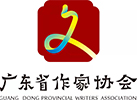
标题

标题
内容
首页 > 自定义类别 > 海上丝绸之路文学发展论坛 > 发言
粤港澳大湾区文学的融合与发展
更新时间:2018-11-11 作者:潘耀明(中国香港)来源:广东作家网
这次论坛大会请我发言的主题是“粤港澳大湾区文学的融合与发展”。我想重点是如何整合大湾区的文学资源问题。
我觉得要整合大湾区文学,首先要有一个大湾区文学平台。所以我建议应该筹备一份大湾区文学杂志和在大湾区所属的主流报刊设立大湾区文学园地,以供区内作家发表文学作品,惟其如此,才能活跃大湾区的文学创作,和加强大湾区文学的交流活动。当然我们也希望促成大湾区的出版合作。
香港扮演的角色
我曾说过,香港是国际文化窗口,也是中西文化交汇之地,信息发达,过去一直发挥着文化窗口的作用,一九九七年回归后,在整合内地与特区的文化,仍然起着一定的作用。
对于与大湾区的出版合作,过去已经有过先例了。我谨此提供一些出版合作的成功经验,作为抛砖引玉──过去香港三联书店是一家内地图书发行公司,自己没有建立出版部。一九八○年我被调至三联书店筹组三联书店出版部。
那是中国刚刚走上改革开放道路的年代。在此之前,内地的出版业除了出版政治读物,只有数量很有限的文化书的出版。可以说整个出版业仍然处于较落后的状态。
相反地,香港虽然图书市场狭窄,文化出版讯息却较发达,地处华洋文化交流枢纽,可以发挥国际文化窗口的作用,出版业也相对地活跃。我们因应当时的客观环境,主动策划多套文丛、文库和大型文化艺术画册。我们利用内地的丰富资源,如强大的作者阵容和编辑力量,主动策划选题,与内地出版社开展合作关系,制作大型图书。
内地开放伊始,我们首先策划两套文集,恰恰是与广州花城出版社合作──《沈从文文集》和《郁达夫文集》,各十三卷,其中一卷是资料夤编。
所以有此出版意念,是因香港及海外对沈从文及郁达夫较熟悉的原故。结果这两套书打响了香港三联书店的出版品牌,受到读书人的欢迎和肯定。
三十多年后,我去参观湘西凤凰城沈从文故居,香港三联版的烫金封面的《沈从文文集》被放置于玻璃橱窗内,十分醒目。
由于以上两套文集的成功出版,成为合作出版的样板,加强了我们以合作形式出版文学丛书的信心。我们开始策划好几套文丛。
首先我们就近与广东人民出版社合作出版《历代诗人选》。从《诗经》出起,一直到明末清初的诗人选集,共四十册。
《历代诗人选》合作的成功经验,更增加我们的信心,陆续开展与内地其它出版社的合作,如与人民文学出版社合作出版的《中国现代作家选集丛书》,与上海辞书出版社合作出版的《历代散文选》。
继此之后,我为之雄心万丈,提出出版港、台及海外作家的选集丛书。我建议另成立“文艺风出版社”,出版《台海文丛》,当时入选的作家有陈映真等人。
此外,我还趁留学美国期间,策划了一套以海外华人作家为主的《海外文丛》,入选作家包括聂华苓、陈若曦、于梨华等三十余人。
《香港文丛》则出版了多位作家的选集。我们曾打算待各套丛书出版后,可以整合成《世界华文文学大观》,因囿于人力财力,我们采取灵活的做法,即先化整为零,再配龙成套。
这个计划,在我离开香港三联书店而中断(当年金庸亲自下聘书邀请我主编《明报月刊》)。《香港文丛》只出了几本,原设想的待《现代中国作家丛书》出齐后,再发展一套《当代中国作家选集丛书》也中断了。这是十分可惜的!
我任香港三联书店出版主管的十六年期间,策划了十五套文丛或文库。
粤港澳大湾区的资源十分丰富,如果能进行互补整合发展,大有可为。
我觉得大湾区文学平台,可以创立一本定期大湾区文学杂志、报刊的专版和大湾区文丛。设立一个独立的编辑部门,由这个编辑部门设编委,由大湾区的文学组织代表加入,统一组稿,提供给文学杂志及大湾区所属报章的大湾区文学专页刊登,可减少各自编辑组稿重复工序。
当然这里还需要设立一个“大湾区文学基金”予以解决经费问题。
Greater Bay Area:Literature Fusion And Development
Pan Yaoming (Hongkong,China)
My topic this time is “Greater Bay Area: literature fusion and development” to share my view on how to integrate literature resources in this area.
In my case, offering a platform is the top priority in this aspect. So a new literature magazine or specific opportunities by mainstream press should be available to authors in this area. Only in that way can we motivate literature creation and exchanges. In addition, closer publication cooperation is also on our agenda.
As I said, due to its information advantage, Hong Kong was a window towards international culture which embraced both Chinese and Western cultures in the past. The year 1997 witnessed Hong Kong’s return to motherland. After that, it also serves as an intermediary to facilitate cultural exchanges with China’s mainland.
There is no lack of precedents in this connection, including cooperation in publication. Here are several success stories to inspire your valuable opinions ──In 1980, I was designated to prepare for the publication department of Joint Publishing in Hong Kong(also known as Sanlian Press) as it originally had no independent one.
Reform and opening-up also just embarked on at that time. Before to that, the publishing industry was lagging behind as political reading materials were most popular and a few literature ones were almost a luxury.
On the contrary, despite Hong Kong’s narrow book market, publishing information was relatively abundant owing to its location as the hub of cultural exchanges between China and the West.In view of this, we came up with a great idea to engage in publishing collected works, series as well as large culture and art albums. Extraordinary authors and editors were part of rich resources from China’s mainland. Therefore, through elaborate plans, we utilized the advantage to cooperate with mainland publishers on a large scale.
At the beginning of the opening up, Flower City Publishing House in Guangzhou became our partner to jointly publish Collected Works of Shen Congwen and Collected Works of Yu Dafu. Both works had 13 volumes with one volume as compilation of data.
Considering the popularity of these two writers, they were our top choices. It turned out as expected that the two works made our Joint Publishing more invisible and gained great recognition.
Even 30 years later during my visit to Shen Congwen’s former residence in Fenghuang town, western Hunan province, our version of Collected Works of Shen Congwen with glided covers behind the glass window was still striking.
The success set an example for joint publication and boost our confidence in this setting.
More works came out afterwards. The first highlight was Selected Poems of the Past through joint efforts with Guangdong People’s Publishing House. Totaling 40 volumes, the work covered from The Book of Songs to selected poems in the late Ming and early Qing dynasties.
The positive result this time served as the source of our confidence to move cooperation forward, including joint publication of A Collection of Modern Chinese Writers(selected works) with People’s Literature Publishing House and Selected Prose works of the Past with Shanghai Lexicographical Publishing House.
Since then, I had been ambitious to publish a collection of selected works from Hong Kong, Taiwan and overseas writers. I proposed to set up Literature Publishing House and publish Literary Series of Taiwan Writers to include great works of Chen Yingzhen, Huang Chunming, Yang Kui, Yang Qingchu, etc.
Moreover, Literary Series of Overseas Writers published during my further study in the United Sates mainly covered more than 30 overseas Chinese, such as Nie Hualing,Chen Ruoxi, Yu Lihua, etc.
Another publication, Literary Series of Hong Kong Writers, embraced many Hong Kong writers. According to the original plan, we wanted to take flexible methods to handle with labor and financial challenges. That is to say, A Grand View of World Chinese Literature would come out by pulling together separate books of collected works.
This project was interrupted as I left Joint Publishing (owing to Jin Yong’s personal invitation for me to be in charge of Mingpao Monthly). As a result, Literary Series of Hong Kong Writers remained unfinished. What’s more, the former plan to publish the Anthology Series of Contemporary Chinese Writers after a full collection of Series of Modern Chinese Writers was consequently given up. What a pity!
As the person in charge of Joint Publishing for 16 years, I had engaged in the publication of 15 series books.
All in all, the words above indicate abundant resources and bright prospect in Great Bay Area.
In order to fully integrate and utilize literature resources, I believe we can found a periodical literature magazine, set special columns and compile literary series of works, namely, a platform to develop literature in this area. An independent editorial department should organize an editorial board to be responsible for coordinated work related to publication. In that way, as members of the board, representatives from literary societies in this area can avoid wasteful duplication of effort and ensure the quality of works published in special columns.
The blueprint for future literary prosperity is inspiring but costly. So here my solution is to establish the Literary Fund for Great Bay Area.